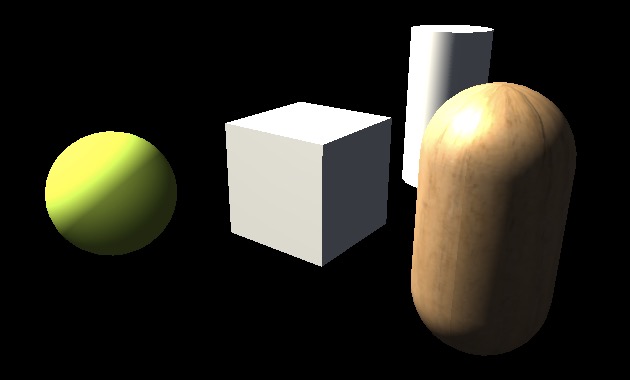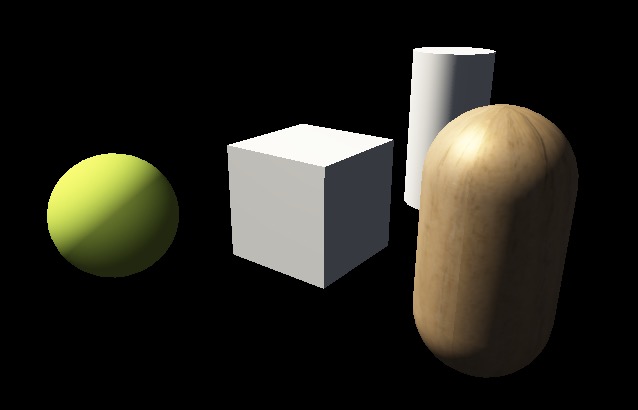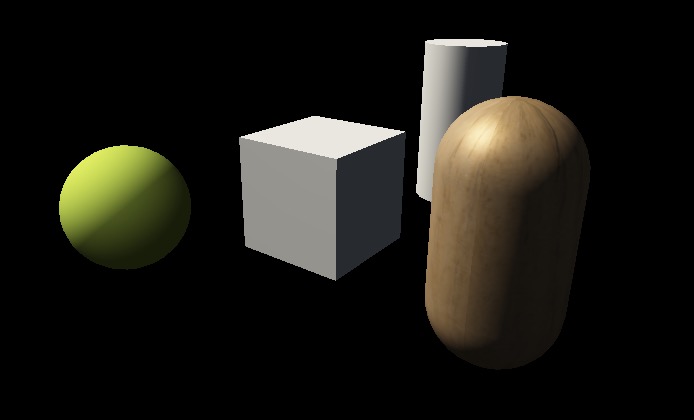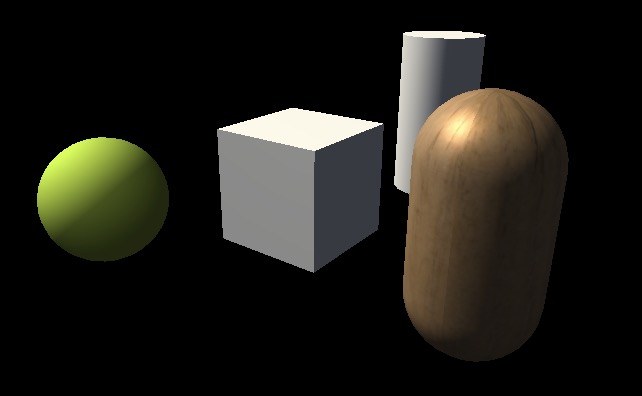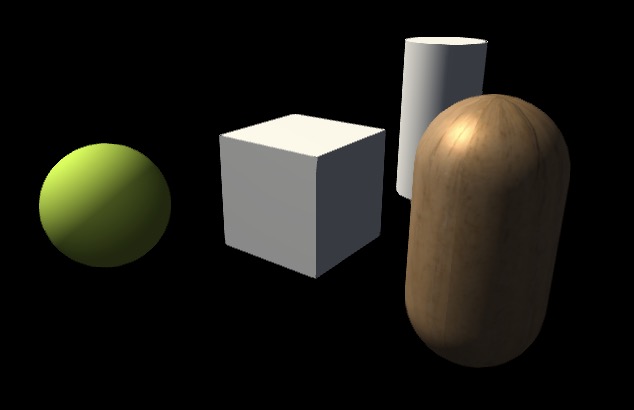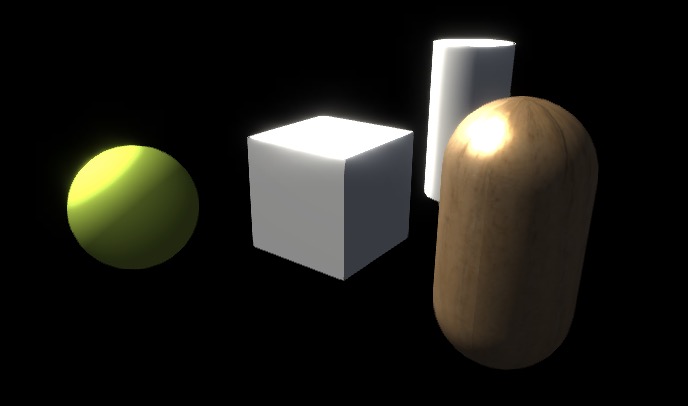# Post-processing node
Post-processing nodes are a special type of rendering nodes that provide a set of specifications and life cycles to help developers quickly customize post-processing effects.
# Base class
All post-processing nodes should be derived from the base class RGPostProcessNode:
// Each post-processing Pass data
export interface IPostProcessPassData {
effect: Effect;
renderTarget: RenderTexture | Screen;
lightMode: string;
}
// Configuration common to all post-processing nodes
export interface IRGPostProcessNodeOptions {
renderToScreen?: boolean;
hdr?: boolean;
}
// Post-processing node base class
export abstract class RGPostProcessNode<
TInput extends {[key: string]: keyof IRGData} = {},
TOptions extends IRGPostProcessNodeOptions = IRGPostProcessNodeOptions
> extends RGNode<TInput,'RenderTarget', TOptions> {
public abstract onGetPasses(context: RenderSystem, options: TOptions): IPostProcessPassData[];
public onCreatedData(context: RenderSystem, materials: Material[], passes: IPostProcessPassData[], options: TOptions): void {}
public onFillData(context: RenderSystem, materials: Material[], passes: IPostProcessPassData[], options: TOptions): void {}
}
According to the introduction to the render node in the previous chapter, we can see that the post-processing node is actually a node that can customize the input and output RenderTarget**. In fact, most post-processing nodes will receive one or more RenderTexture is used as input, and finally output to RenderTexture or Screen, which also means that post-processing nodes can be cascaded in essence. From this perspective, for a simple post-processing process, it is actually a pipeline also may.
# Custom node
To customize a post-processing node, the most important thing is to master the three life cycles of the node. Here is the simplest Blit node as an example to discuss how to customize the post-processing node:
export class RGBlitPostProcessNode extends RGPostProcessNode<{sourceTex:'RenderTarget'}> {
public inputTypes = {sourceTex:'RenderTarget' as'RenderTarget'};
public onGetPasses(context: RenderSystem, options: IRGPostProcessNodeOptions): IPostProcessPassData[] {
return [{
effect: this.getEffectByName('System::Effect::Blit'),
renderTarget: options.renderToScreen? context.screen: new RenderTexture({
width: context.screen.width,
height: context.screen.height,
colors: [{
pixelFormat: options.hdr? Kanata.ETextureFormat.RGBA16F: Kanata.ETextureFormat.RGBA8
}]
}),
lightMode:'Default'
}];
}
public onCreatedData(context: RenderSystem, materials: Material[], passes: IPostProcessPassData[], options: IRGPostProcessNodeOptions) {
}
public onFillData(context: RenderSystem, materials: Material[]): void {
const srcTex = this.getInput('sourceTex') as RenderTexture;
if (srcTex) {
materials[0].setTexture('sourceTex', srcTex);
}
}
}
For this node, the first definition is the input type information {sourceTex:'RenderTarget'}, which declares that a render target is required as input.
Then there is the life cycle onGetPasses, which returns an array. The number of elements in the array indicates how many Passes there will be. Each Pass returns an Effect for rendering, a RenderTarget for output, and The lightMode for rendering. The node will select the RenderTarget of the last Pass as the total output of the node.
The life cycle onCreatedData will be executed after the post-processed Passes data is assembled. You can do some preparations here, such as setting macros for material, etc.
The last is the life cycle onFillData, which will be called before rendering after each execution to update the data needed for each frame. Here, the input texture is obtained in time and set in material.
Note that the number of elements in this
materialscomes from the number of Passes, and each Pass corresponds to a Material.
# Built-in node
At present, the small game framework provides some built-in post-processing nodes:
# RGBlitPostProcessNode
Copy node, copy the input texture sourceTex to the output.
# ▌RGHDRPostProcessNode
Tone mapping node, do tone mapping output to the input texture sourceTex.
After setting the scene light source intensity to 2.0:
Before opening Opening (exposure=1.0) Opening (exposure=0.5)
# ▌RGFXAAPostProcessNode
Quickly approximate the anti-aliasing node, and output after anti-aliasing the input texture sourceTex.
Before opening After opening
# ▌RGBloomPostProcessNode
Floodlight node, the input texture sourceTex through adjusted parameters to make floodlight output.
Before opening After opening
uniforms.setUniform("u_lightMap", BuildInTextures.black._getengineTexture()!);
uniforms.setUniform("u_speCube", settings.mainEnvironmentMap._getengineTexture()!);
uniforms.setUniform("u_environmentMap", settings.mainPanoramaMap._getengineTexture()!);
uniforms.setUniform('u_csmFarBounds', [0, 0, 0, 0]);
uniforms.setUniform('u_SH', settings.shCoefficients);
this._globalUniforms.uiUniforms?.copy(uniforms);
const faUniforms = this._globalUniforms.faUniforms!;
tempArr4[0] = settings.fogMode;
tempArr4[1] = settings.fogStart;
tempArr4[2] = settings.fogStart + settings.fogRange;
tempArr4[3] = settings.fogDensity;
faUniforms.setUniform("u_fogInfos", tempArr4);
faUniforms.setUniform("u_fogColor", settings.fogColor._raw);
tempArr1[0] = this.game.gameTime;
faUniforms.setUniform("u_gameTime", tempArr1);
// Register the default shadow Effect
if (!this._shadowFallbackRegistered) {
const scEffect = engine.loader.getAsset<Effect>('System::Effect::ShadowCasterFallBack');
if (scEffect) {
renderEnv.registerFallbackEffect('ShadowCaster', scEffect);
this._shadowFallbackRegistered = true;
}
}
}
// After the processing of all cameras is over, clear the dirty list of UICanvas inside the current game, vertex dirty bits and material dirty bits, and the dirty list itself public onExecuteDone(context: RenderSystem) { const uiCanvas = this.game!.rootUICanvas; if (uiCanvas._vertexDirtyList.length> 0) { for (let i = 0; i <uiCanvas._vertexDirtyList.length; i++) { const dirtyRenderable2d = uiCanvas._vertexDirtyList.data[i]; if (dirtyRenderable2d._vertexDirtyUpdateFlag) { // Clean up dirty vertices dirtyRenderable2d._vertexDirtyUpdateFlag = false; } } uiCanvas._vertexDirtyList.reset(); } if (uiCanvas._materialDirtyList.length> 0) { for (let i = 0; i <uiCanvas._materialDirtyList.length; i++) { const dirtyRenderable2d = uiCanvas._materialDirtyList.data[i]; if (dirtyRenderable2d._materialDirtyUpdateFlag) { // Clean up dirty material dirtyRenderable2d._materialDirtyUpdateFlag = false; } } uiCanvas._materialDirtyList.reset(); } if (uiCanvas._designResolutionDirty) { uiCanvas._designResolutionDirty = false; } }
public onDisable(context: RenderSystem) { // Unregister the default shadow Effect this._shadowFallbackRegistered && renderEnv.unregisterFallbackEffect('ShadowCaster'); } }
And the realization of the subgraph is:
```ts
export interface IForwardBaseSubGraphOptions {
// camera
camera: BaseCamera;
// Global Uniform in the ForwardBase stage
fbUniforms: engine.UniformBlock;
// Global Uniform in the ForwardAdd phase
faUniforms: engine.UniformBlock;
// Global Uniform in the UI stage
uiUniforms?: engine.UniformBlock;
// Global Uniform in the shadow phase
scUniforms?: engine.UniformBlock;
// #if defined(EDITOR)
rcUniforms?: engine.UniformBlock;
// #endif
}
/**
* The default sub-image of the built-in forward rendering pipeline is generated for each camera.
* Actually contains the Forward Add part.
*/
export default class ForwardBaseSubGraph extends RenderGraph<IForwardBaseSubGraphOptions> {
// View used to clear the screen by default
protected _defaultClearView?: engine.View;
public onActive(context: RenderSystem, options: IForwardBaseSubGraphOptions) {
this._rebuildRG(options);
}
// Create the whole picture by `cameras`, the camera list has been sorted
protected _rebuildRG(options: IForwardBaseSubGraphOptions) {
// First clear the entire picture
this._clear();
const {camera} = options;
if (camera instanceof UICamera) {
// If it is a UI camera, create a sub-image of the UI camera
const cameraNode = this.createNode<RGCameraNode>(`camera-${camera.entity.name}`, RGCameraNode, {camera});
const clearNode = this.createNode<RGClearNode>('ui-clear', RGClearNode, {});
const uiNode = this.createNode<RGUIPrepareNode>('ui-prepare', RGUIPrepareNode, {camera});
const uiRTNode = this.createNode<RGGenRenderTargetNode>('render-target', RGGenRenderTargetNode, {createRenderTarget: () => this._createRT(camera)});
const uiRenderNode = this.createNode<RGRenderNode>('ui-render', RGRenderNode, {
lightMode:'ForwardBase',
createUniformBlocks: () => [options.uiUniforms!]
});
this.connect(cameraNode, uiRenderNode,'camera');
this.connect(cameraNode, clearNode,'camera');
this.connect(uiRTNode, clearNode,'renderTarget');
this.connect(uiRTNode, uiRenderNode,'renderTarget');
this.connect(clearNode, uiRenderNode);
this.connect(uiNode, uiRenderNode,'meshList');
return;
}
this._buildNodesForCamera(camera as Camera, options)
}
// Will return `lastNode`, which is used to connect each subgraph to ensure the order
protected _buildNodesForCamera(camera: Camera, options: IForwardBaseSubGraphOptions) {
// The following is the forwardbase node creation part
let rtNode!: RGGenRenderTargetNode;
if (camera.postProcess) {
rtNode = this.createNode<RGGenRenderTargetNode>('render-target', RGGenRenderTargetNode, {createRenderTarget: () => this._createPostProcessRT(camera, camera.postProcess?.hdr || false)});
} else {
rtNode = this.createNode<RGGenRenderTargetNode>('render-target', RGGenRenderTargetNode, {createRenderTarget: () => this._createRT(camera)});
}
const cameraNode = this.createNode<RGCameraNode>(`camera-${camera.entity.name}`, RGCameraNode, {camera});
const fwCullNode = this.createNode<RGCullNode>('fb-cull', RGCullNode, {lightMode:'ForwardBase'});
const fwClearNode = this.createNode<RGClearNode>('fb-clear', RGClearNode, {});
const fwRenderNode = this.createNode<RGRenderNode<{shadowMap:'RenderTarget'}>>('fb-render', RGRenderNode, {
lightMode:'ForwardBase',
createUniformBlocks: () => [options.fbUniforms!],
inputTypes: {'shadowMap':'RenderTarget'},
uniformsMap: {
u_shadowMapTex: {
inputKey:'shadowMap',
name:'color'
}
}
});
// The following is the connection part of the Skybox node
if (camera.drawSkybox) {
const skyBoxNode = this.createNode<RGSkyBoxNode>('skybox', RGSkyBoxNode, {});
const skyBoxRenderNode = this.createNode<RGLightNode>('skybox-render', RGRenderNode, {
lightMode:'Skybox',
createUniformBlocks: () => [options.fbUniforms!]
});
this.connect(cameraNode, skyBoxRenderNode,'camera');
this.connect(skyBoxNode, skyBoxRenderNode,'meshList');
this.connect(rtNode, skyBoxRenderNode,'renderTarget');
this.connect(skyBoxRenderNode, fwRenderNode);
}
// The following is the connection part of the shadow rendering node
if (camera.shadowMode !== engine.EShadowMode.None) {
const scRTNode = this.createNode<RGGenRenderTargetNode>('sc-render-target', RGGenRenderTargetNode, {createRenderTarget: () => this._createRT(camera,'ShadowCaster')});
const scRenderNode = this.createNode<RGLightNode>('shadow-caster', RGLightNode, {
lightMode:'ShadowCaster',
createUniformBlocks: () => [options.scUniforms!]
});
this.connect(cameraNode, scRenderNode,'camera');
this.connect(scRTNode, scRenderNode,'renderTarget');
this.connect(fwCullNode, scRenderNode,'meshList');
this.connect(scRenderNode, fwRenderNode,'shadowMap');
}
// The following is the connection part of the ForwardBase node
this.connect(cameraNode, fwCullNode,'camera');
this.connect(cameraNode, fwRenderNode,'camera');
this.connect(rtNode, fwClearNode,'renderTarget');
this.connect(cameraNode, fwClearNode,'camera');
this.connect(rtNode, fwRenderNode,'renderTarget');
this.connect(fwClearNode, fwRenderNode);
this.connect(fwCullNode, fwRenderNode,'meshList');
// The following is the connection part of the ForwardAdd node
const faCullLightNode = this.createNode<RGCullLightFANode>('fa-cull-light', RGCullLightFANode, {});
const faCullMeshNode = this.createNode<RGCullMeshFANode>('fa-cull-mesh', RGCullMeshFANode, {});
const faRenderNode = this.createNode<RGFARenderNode>('fa-render', RGFARenderNode, {
lightMode:'ForwardAdd',
createUniformBlocks: () => [options.faUniforms!],
});
this.connect(fwCullNode, faCullLightNode,'meshList');
this.connect(fwCullNode, faCullMeshNode,'meshList');
this.connect(faCullLightNode, faCullMeshNode);
this.connect(fwRenderNode, faRenderNode);
this.connect(cameraNode, faRenderNode,'camera');
this.connect(rtNode, faRenderNode,'renderTarget');
this.connect(faCullMeshNode, faRenderNode,'meshList');
this.connect(faCullLightNode, faRenderNode,'lightList');
// The following is the post-processing node creation connection part
let finalBlitNode!: RGBlitPostProcessNode;
if (camera.postProcess) {
let preNode: RGNode<any, any, any> = rtNode;
const {hdr, steps} = camera.postProcess.getData();
steps.forEach((step, index) => {
let currentNode: RGNode<any, any, any>;
switch (step.type) {
case EBuiltinPostProcess.BLIT:
currentNode = this.createNode('post-process-blit', RGBlitPostProcessNode, {hdr, ...step.data});
break;
case EBuiltinPostProcess.BLOOM:
currentNode = this.createNode('post-process-bloom', RGBloomPostProcessNode, {hdr, ...step.data});
break;
case EBuiltinPostProcess.FXAA:
currentNode = this.createNode('post-process-fxaa', RGFXAAPostProcessNode, {hdr, ...step.data});
break;
case EBuiltinPostProcess.HDR:
currentNode = this.createNode('post-process-tone', RGHDRPostProcessNode, {hdr, ...step.data});
break;
}
this.connect(preNode, currentNode,'sourceTex');
index === 0 && this.connect(faRenderNode, currentNode);
preNode = currentNode;
});
finalBlitNode = this.createNode('final-blit', RGBlitPostProcessNode, {dstTex: this._createRT(camera)});
this.connect(preNode, finalBlitNode,'sourceTex');
}
// The following is the connection part of the Gizmo node
if (camera.drawGizmo) {
const gizmoNode = this.createNode<RGGizmosNode>('gizmo', RGGizmosNode, {});
const gizmoRenderNode = this.createNode<RGRenderNode>('gizmo-render', RGRenderNode, {
lightMode:'ForwardBase',
createUniformBlocks: () => [options.fbUniforms!],
});
const rect = camera.viewport;
const x = rect? rect.xMin: 0;const y = rect? rect.yMin: 0;
const width = rect? rect.width: 1;
const height = rect? rect.height: 1;
const viewPortRect: engine.IRect = {x, y, w: width, h: height};
const scissorRect: engine.IRect = {x, y, w: width, h: height};
const gizmoView = new engine.View({
passAction: {
depthAction: engine.ELoadAction.CLEAR,
clearDepth: 1,
colorAction: engine.ELoadAction.LOAD,
stencilAction: engine.ELoadAction.LOAD,
},
viewport: viewPortRect,
scissor: scissorRect
})
// Before drawing the gizmo, clear the depth to ensure that the gizmo is drawn at the top
const gizmoClearDepthNode = this.createNode<RGClearNode>('gizmo-clear-depth', RGClearNode, {})
const gizmoViewNode = this.createNode<RGGenViewNode>('gizmo-view', RGGenViewNode, {viewObject: {view: gizmoView} })
this.connect(rtNode, gizmoClearDepthNode,'renderTarget');
this.connect(finalBlitNode || faRenderNode, gizmoViewNode);
this.connect(gizmoViewNode, gizmoClearDepthNode,'camera')
this.connect(gizmoClearDepthNode, gizmoRenderNode);
this.connect(cameraNode, gizmoNode,'camera');
this.connect(cameraNode, gizmoRenderNode,'camera');
this.connect(rtNode, gizmoRenderNode,'renderTarget');
this.connect(gizmoNode, gizmoRenderNode,'meshList');
}
}
// Create RenderTarget by camera and lightMode
protected _createRT(camera: BaseCamera, lightMode: string ='ForwardBase') {
let fbRT: RenderTexture | Screen | null = null;
if (camera.renderTarget) {
fbRT = camera.renderTarget;
} else {
// Both the simulator and ide need this logic, so no define editor is added
if (camera.editorRenderTarget) {
fbRT = camera.editorRenderTarget
} else {
fbRT = this.context.screen;
}
}
if (lightMode ==='ShadowCaster') {
// If it is a shadow process, create a RenderTexture
return new RenderTexture({width: 2048, height: 2048});
}
return fbRT;
}
protected _createPostProcessRT(camera: BaseCamera, hdr: boolean): RenderTexture {
const origRT = camera.renderTarget || this.context.screen;
const {width, height} = origRT;
return new RenderTexture({width, height, colors: [{
pixelFormat: hdr? engine.ETextureFormat.RGBA16F: engine.ETextureFormat.RGBA8
}]});
}
}
# Debug pipeline
The debugging pipeline DebugRG is specifically used to debug whether the current rendering environment is normal. It is very simple to use:
// The `texture` in the initialization parameters can be changed, the default is green here
const debugRG = new engine.DebugRG({texture: engine.BuildInTextures.green});
game.renderSystem.useRenderGraph(debugRG);
If a quarter of a green patch is displayed on the screen, it means that the rendering system is working properly.
